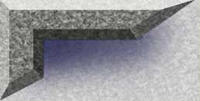|
Nazi Art
"The great mass of the people...will more easily fall victim to a big lie than to a small one."
Source: Adolf Hitler, Mein Kampf.
Nazi Propaganda as Art (link) In July 1937, the Nazi party mounted an exhibition called "Degenerate Art." The exhibition was meant to show the public the absurdity of the modern art movement. At the same time Hitler launched the "Great German Art Exhibition," during which Hitler stated, "true art is and remains eternal, it does not follow the law of the season's fashions: its effect is that of a revelation arising from the depths of the essential character of a people which successive generations can inherit.


The opening of the "Great German Art Exhibition",
July 16,1939.
Hitler speaking in the former "Ehrenhalle" (Hall of Honor).
Many of the works displayed in the "Great German Art Exhibition," to be frank were not great at all. The Nazis displayed many works of art that were not created during the time of the Nazis. In several cases the artists were not Nazis themselves nor can any proof be found that they believed in any of the Nazi ideals. However, Hitler interpreted the artists work and like many other kinds of propaganda used, distorted the work in order to promote his agenda. There were however contemporary German artists, many of them at the very least token Nazis, who actually produced genuinely good, some great, works of art. These are the artists that this section will be concentrating on.
Arno Breker (Nazi)
Breker was perhaps the best of the Nazi artists. The technique he used was excellent, as was his choice of subject, poses, and theme. Breker used numerous "naked men with swords" to promote the notions of strength and willingness to sacrifice the self for the common good.
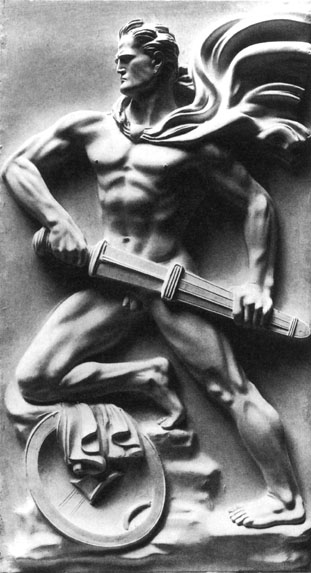
These are motifs often seen in many other Nazi works with explicit glorification of militarism.
Hubert Lanzinger (Nazi)
This is an excellent example of art that is good in the sense that it properly conveys the message that Lanzinger intended. If that was George Washington on the horse and an American flag in his hand, this may have hung on the walls of Congress.
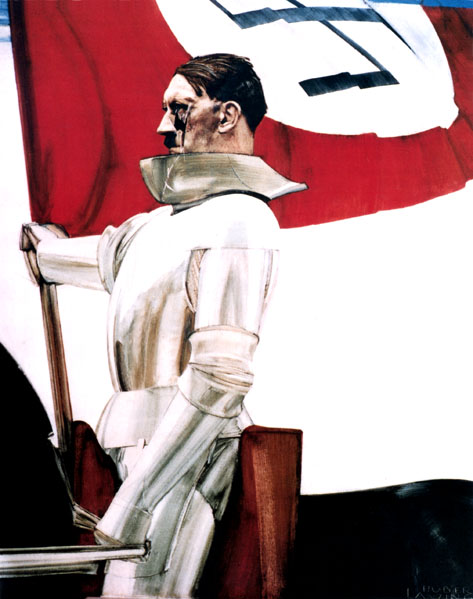
Karl Albiker (Nazi)
A common theme in a lot if Nazi artwork is athletic prowess. Like Brekers work, the theme and technique of this artwork are excellent, and there is nothing overtly Nazi-oriented (no Hitler, swastikas, etc). In a world without Hitler, this may have been simply innocent art but given the era in which it was created, the theme of athletic prowess and competition are unmistakably intended to promote this view of Nazi society.
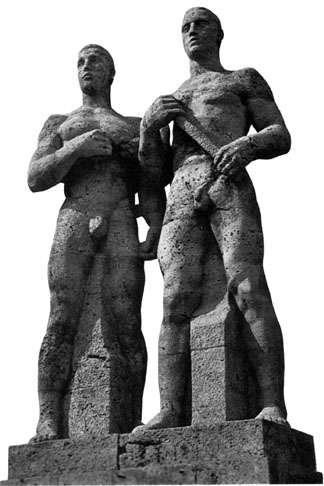
Julius Paul Junghanns (Nazi)
Of the Nazi attempts at recreating a "simple country life" this is probably the most successful. While most of these "rural nazi" attempts were embarrassingly clumsy, Junghanns is quite effective.
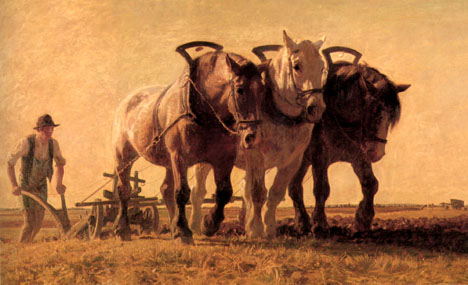
Adolph Wissel (Nazi)
This painting exemplifies many of the Nazi ideals, such as family, union with the soil and health. The Nazis were well received in the rural areas and this type of art allowed the urbanites to idealize the the simple life without ever experiencing it.
|
|
"Instead, the role of the artists was to either portray the German world as peaceful, or as drawn into a struggle for survival to defend it. Thus, art was to become one more weapon in the Nazi regime's arsenal. Hitler was a master manipulator, and understood the value of propaganda and artistic fervor. He also understood how to control people by threatening their job, family and existence. Artists who did not fall in with the party ideal risked their life. The artists glorified the German citizens, soldiers, and Hitler's ideals. The painters used their art to depict Hitler as the healing element that would cure the country's ills. They also painted the common "Volk" (folk) in everyday settings. The art of this racially pure country was to overcome differences in class and mold all of the people into one ideal. When not painting pastoral scenes or glorifying the war, the artists would turn their paint brushes against the Jew, depicting him as inhuman and inferior."
|
 |
|
|  |
|
|
